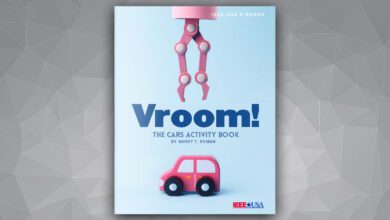
He starts in the home with a problem such as painting a room — encouraging you to engage your children with questions about what colors they would choose for the walls (all the same colors or different?), for the trim, and for the ceiling.
The author wants you not only to ask their opinions, but also to have them gather facts to apply to the problem. Roman suggests introducing them to the color wheel, to see and understand what colors naturally complement each other; have them calculate the amount of space to be painted, and how much paint will be needed (and at what cost); and having them investigate the different paints available, as well as the pros and cons of each.
Roman then urges you to buy your child their own sets of brushes, and let them join you in painting. He notes that “more than 50% of the human brain’s frontal lobe capacity is dedicated to using the hands.” He suggests letting your kids get hands-on experience, whenever possible.
The author outlines how you can follow a similar process for wallpapering a room; or redesigning the layout of a room’s furniture — maybe even in the child’s own room. He always encourages using math to solve a problem. Roman recommends the kitchen, as a place with numerous opportunities to proactively teach both STEM and problem-solving skills, while having quality family fun time. One activity he examines is having a recipe for four; and having your kids adjust the ingredients, so it can serve six or eight.
Roman goes on to take problem solving-ideas outside — having children determine if the yard could fit a pool, a garden, or a play area for a badminton court.
Again, he encourages looking at the problem holistically. Don’t just have children determine if a pool can fit: also have them explore the environmental impact (determine the environmental impact of building a pool vs. using the town pool); safety concerns (what rules might be needed to be operated safely?); and the impact of technology (what technology could be used to reduce the burden of pool cleaning?).
In this audiobook, Roman goes beyond the home and suggests vacations are a great way to engage your child in problem solving — starting with planning the family vacation (or even a day trip). Have your child break the planning down into manageable chores, such as choosing between destinations, setting a budget, determining costs, identifying transportation options, and investigating attractions.
He observes vacations, like home projects, “have many components that must be considered. In this way, you will teach them to break large problems down into more manageable, smaller ones — so the whole problem does not seem so daunting.”
Roman believes that helping your children learn problem-solving outside of the classroom will build confidence and self-esteem; help organize their logical thinking skills; and ultimately, prepare them for larger problems they may face in life.
Harry T. Roman holds 12 U.S. Patents; and he has received numerous engineering, invention and teaching awards. These honors include the Distinguished Technology Educator Award from the New Jersey Technology Education and Engineering Association; and the Inventor of the Year Award from the New Jersey Inventors Hall of Fame (for his application of mobile robots in hazardous work environments). From IEEE, he has received a Meritorious Achievement Award (for developing continuing education products for IEEE members); an Outstanding Engineer Award, and Region 1’s Excellence in Teaching Award. Roman is also the author of an award-winning comic book series from IEEE-USA showing how robots can help solve real-world engineering problems, now available in the IEEE-USA Shop.







